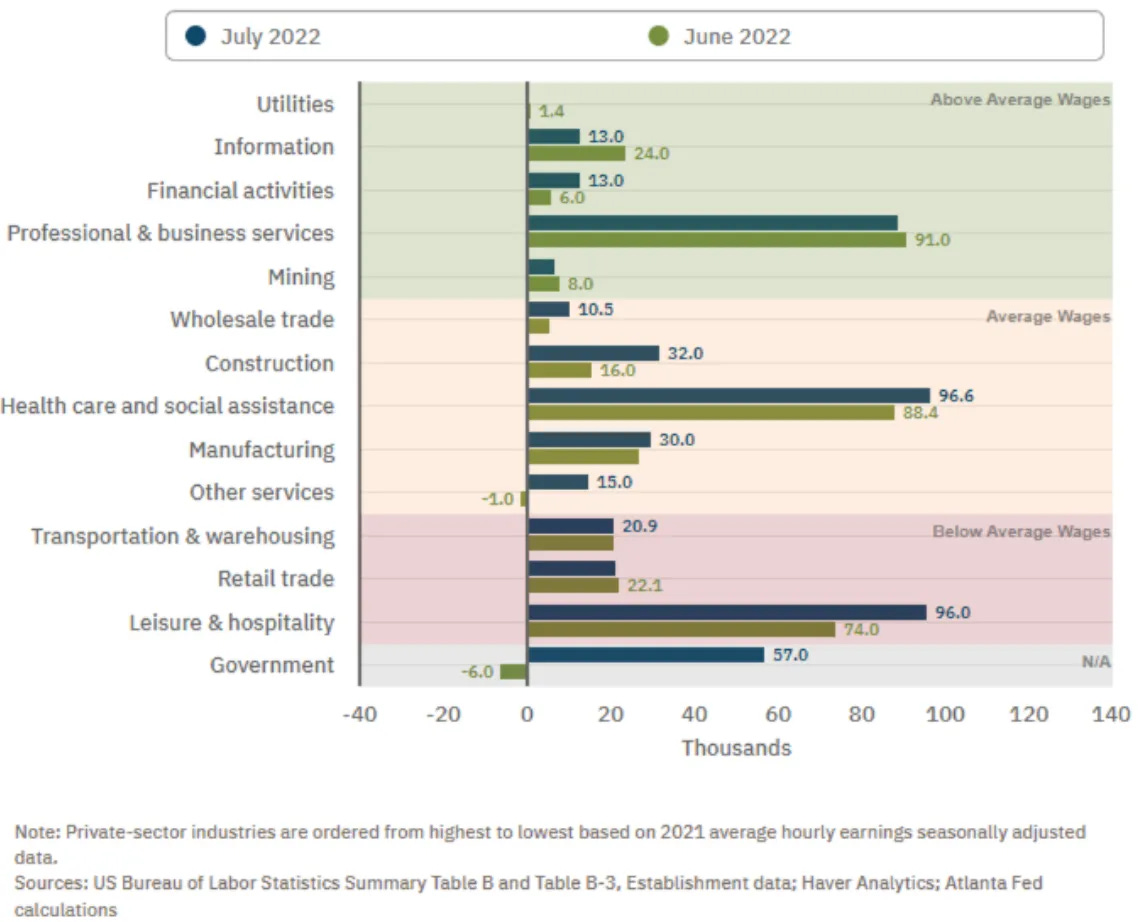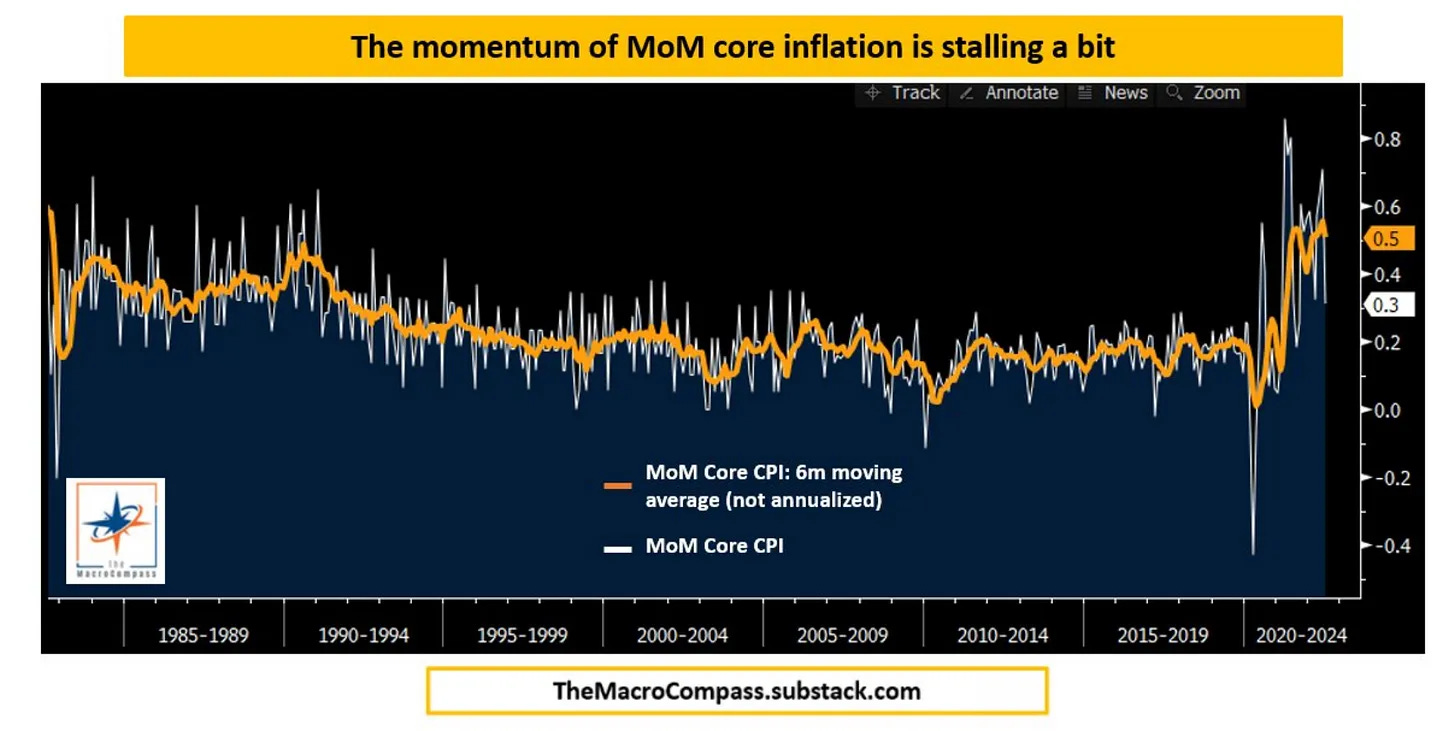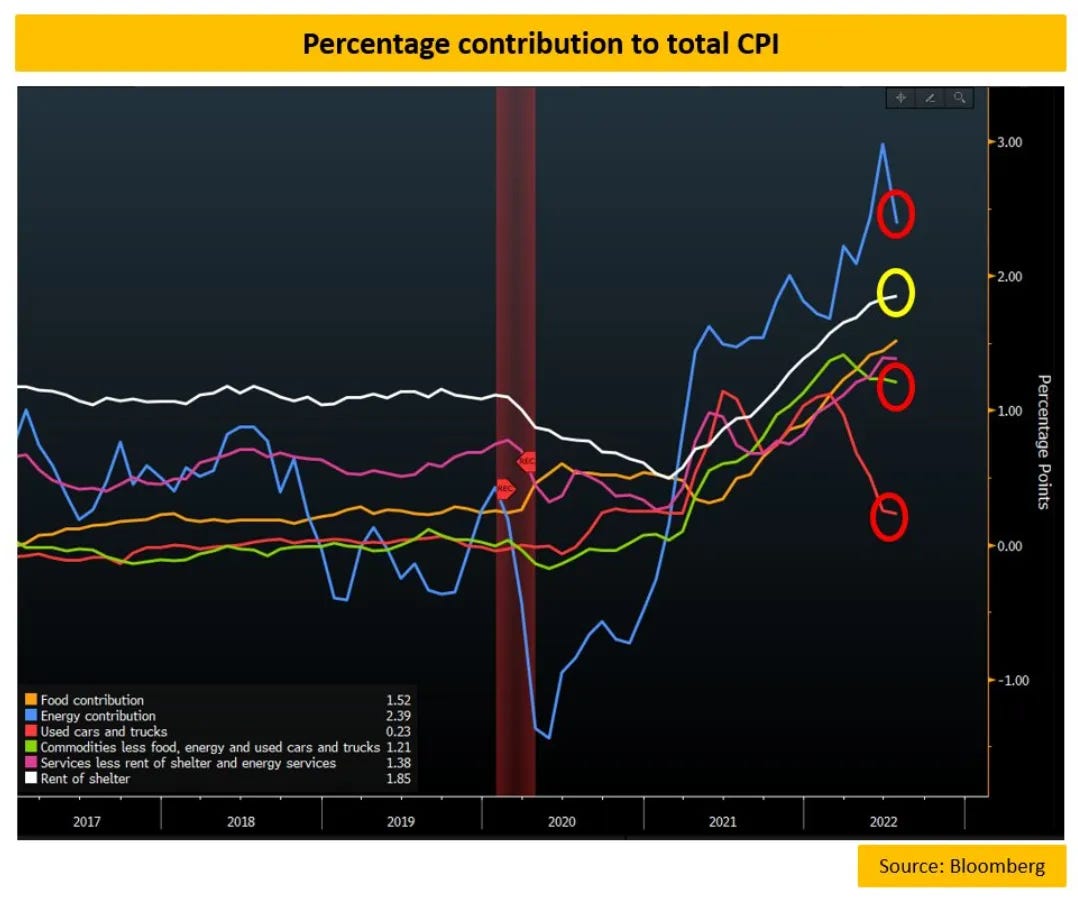|
To investors,
Below is a guest post from Alfonso Peccatiello (@MacroAlf), author of The Macro Compass, providing analysis on the latest CPI and labor market reports, and showing how they do not necessarily imply high odds of a Soft Landing. Before starting The Macro Compass, Alfonso was the Head of Investments, managing a $20 billion portfolio for ING Germany. For more unique macroeconomic insights, I recommend subscribing to The Macro Compass, which is free.
Is the Fed achieving the famous Soft Landing after all?
A deep look at the latest job market and CPI reports reveals how the extent of aggregate demand weakness the Fed engineered through tight financial conditions is not consistent with a Soft Landing - it will help in slowing down inflation, but it will also come at a big cost for economic growth.
Hence, the uprising Goldilocks or Soft Landing narratives seem misplaced at this stage: let’s see why.
1. ‘‘The job market is very strong!’’ Hold your horses, cowboy…
The good news first: all jobs lost during the pandemic have now been recovered (and more on top!). Interestingly, estimates of the pace of job creation necessary to keep unemployment rate stable given US demographics sit in the 100k per month.
For comparison, the latest job report showed the US added >500k!
Great, right? Well, let’s dig deeper.
A. Compared to June, the sector which added most jobs was…the government?!
In a very strong economy where growth is robust, you would expect private (and not public) sector job creation to lead the way.
Not to say other industries didn’t deliver, but the government job creation stood out.
B. Even more interestingly, the Household Survey datawas much (!) weaker than the Bureau of Labor Statistics job report (NFP).
This matters a lot because the BLS survey has two interesting (and very relevant) features: multiple jobholders are counted as if multiple jobs were created, and the statistical methodology for the net number of opened/closed businesses was changed after the pandemic and this can lead to very volatile outcomes.
The household survey instead correctly accounts for multiple jobholders, and it shows how since March we have less (!) full-time and part-time workers while the number of multiple jobholders continues to increase.
Additionally, the BLS survey reported an estimated +309k net new business openings (!) in July - a very large number that contributed to the positive NFP report, and likely the result of a new statistical methodology (here for more details) rather than underlying business openings.
C. Participation rate is not picking up at all
We are still almost 1.5pp away from the pre-pandemic participation rate and by now it seems clear that people who decided to leave the labor force…well, they left for good.
This is very negative for the Soft Landing camp: a structurally smaller labor force means less growth and potentially higher wages - the opposite of Goldilocks.
2. Good news on the inflation front! But why did CPI slow down?
Finally, inflation is showing signs of a slowdown.
And what a slowdown that was: the drop in monthly headline inflation from June's 1.3% to July's 0.0% is the biggest since the '80s - but let’s look at the details.
As we know, the Fed cares about the momentum and composition of inflationary pressures going forward: to ease their policy stance they need to see progress from both fronts.
The 0.3% MoM Core CPI print stabilized the momentum a bit, but the 6m moving average of monthly core inflation remains historically high at 0.5% - a good step, but obviously more is needed.
When it comes to the composition, the big drivers behind the move down in CPI where energy and other commodities (blue and green) together with the most cyclical components of the CPI basket like used cars & trucks (red).
Broadly speaking, the supply chain of these items (particularly energy and other commodities) hasn’t improved much and hence the deceleration in prices there could simply be the byproduct of a weaker aggregate demand.
The weaker demand theory is also backed by another evidence: while the cyclical components of the CPI basket are experiencing drawdowns, the stickier and more lagging core services price (e.g. shelter) remain stubbornly high for now.
In Short: The Soft Landing Narrative Seems Misplaced.
A Soft Landing implies a marked slowdown in inflation while growth remains robust.
While the direction of travel seems right (lower inflation, growth cooling towards trend), the evidence points towards a rather steep drop in economic activity and not a measured and controlled slowdown consistent with the Goldilocks narrative.
Grim forward-looking economic indicators, negative real wage growth for 1.5 years and the reach for credit card debt to bridge the purchasing power gap, multiple jobholders accounting for most ‘‘job creation’’ since March and our G5 Credit Impulse metric all suggest this is not going to be a Soft Landing.
Hopefully this made you think more deeply about the current market and what is likely to come in the following months.
-Pomp (I recommend subscribing to The Macro Compass)
🚨 SPONSORED: The most anticipated crypto event of the year is back. Don’t miss Mainnet 2022, September 21-23rd in New York City. Connect with 4000+ crypto builders and thought leaders for 3-days of can't-be-missed keynotes, fireside chats, demos, networking, and more.
Mainnet brings together a stellar cast of crypto pioneers to speak about the industry's current state and provide projections on the future of web3. Don't miss programming like the fireside chat between Messari’s Ryan Selkis and Ripple's Brad Garlinghouse and keynotes from speakers like crypto entrepreneur Balaji Srinivasan and OpenSea's Devin Finzer.
Click here to see our 150+ speaker lineup and purchase your pass. Plus, get $300 off of your pass today by visiting and entering promo code "POMPLETTER" at check out. 🚨
You’re a free subscriber to The Pomp Letter. For the full experience, become a paid subscriber.








